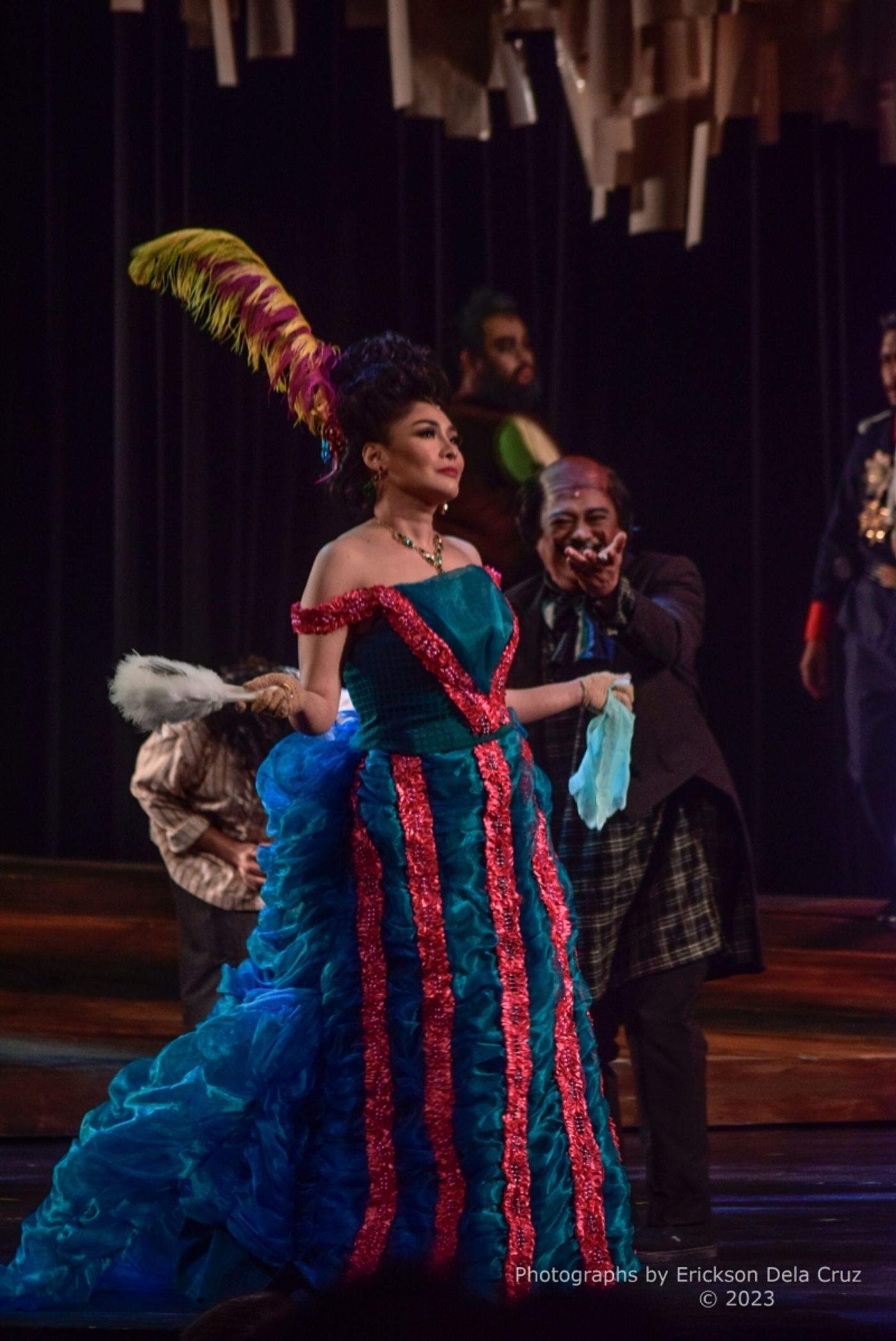Review: IBARRA's Memorable Moments and Excesses
‘Ibarra’ looks forward to a rerun in September 2023.

Manila, Philippines--With the birth of a new theater company, Tanghalang Una Obra, whose creatives were closely associated with Gantimpala Theater Foundation, comes “Ibarra,” a reworking of the latter’s yearly production of “Kanser,” based on Dr. Jose Rizal’s first novel, “Noli Me Tangere.” But this time, it presents the events from “Kanser” from one point of view: that of the title role, essayed by multi-award-winning TV and film actor Piolo Pascual, in his professional theater debut.
A depiction of the Philippines under Spanish colonial rule, a period of oppression, power resting on a few, and countless social diseases, “Ibarra” embodies youth idealism and patriotism for the Philippines and its natives in Crisostomo Ibarra. Coming from an affluent background, Ibarra was educated in Europe and returned to his homeland to educate the poorest of the poor and push for reforms, which irked the 19th-century Philippines’ “frailocracy,” the rule of the Spanish friars.
Pascual’s casting in the principal role is perhaps brave but not faultless.
It’s not Pascual’s first time playing the role; he played Simoun, Ibarra’s other persona, in Lav Diaz’s film “Hele sa Hiwagang Hapis” (2016). This writer saw him perform the role on stage in its opening and closing weeks, and Pascual was able to adjust his acting techniques—from TV film to stage acting, which improved from one performance to the next. He is perfect as Ibarra; his magnetic appeal is concomitant to the hero’s character.
Of the many memorable moments in the musical, music by Joed Balsamo and lyrics by Jomar Fleras, three stand out.
 In the early part of the musical, Carla Guevara-Laforteza’s Dona Victoria and Neil Tolentino’s Don Tiburcio seem to be a pop-up image against a human backdrop that comprises a group of actors in a black-and-white ensemble. Although Dona Victorina’s character is not as huge as Floyd Tena’s Padre Damaso, the former’s colorful costumes and caricature-like depiction make her hard to forget. She’s an absolute personification of colonial mentality, which is, unfortunately, still widespread today.
In the early part of the musical, Carla Guevara-Laforteza’s Dona Victoria and Neil Tolentino’s Don Tiburcio seem to be a pop-up image against a human backdrop that comprises a group of actors in a black-and-white ensemble. Although Dona Victorina’s character is not as huge as Floyd Tena’s Padre Damaso, the former’s colorful costumes and caricature-like depiction make her hard to forget. She’s an absolute personification of colonial mentality, which is, unfortunately, still widespread today.
Amid the festivities while fishing, Ibarra, with his lady love, Maria Clara (Myramae Meneses), their friends, and the boatman (Elias, played Kevin Posadas) discover their fishing net has been entangled with a ferocious crocodile. Rather than relying on animatronics, the show’s director, Frannie Zamora, and choreographer, Paul Morales, ingeniously form a human canopy, representing the friar’s corrupt, abusive leadership at that time. A fight scene ensues between the heroes and the gliding dark wraith-like creatures similar to J.K. Rowling’s dementors in the “Harry Potter” series. Ibarra and Elias jump into the lake and defeat the enormous reptile.
Lastly, Sisa (Nicole Laurel Asensio) and Maria Clara’s duet “Salamin ng Pag-ibig,” where both tragic heroines sing while facing each other in a mirror, is heartbreaking. The mother, Sisa, becomes deranged after losing her children, Basilio and Crispin (JD Tena and Elian Santos, respectively). The daughter, Maria Clara, discovers she’s a bastard due to Padre Damaso’s doing. Brilliantly staged, this scene alone eerily mirrors the Philippines’ suffering wrought by its colonizers.
A bit Stephen Sondheim-inspired, Balsamo’s musical score matches Pascual’s vocal range. The live music, performed by the Manila Symphony Orchestra, heightens the tone, mood, and atmosphere of every scene, which is an immersive experience.
Paul Morales’ stage movements and choreography exude vigor and drama on stage. The principal and ensemble actors maximize the physical space of the stage, especially during Ibarra and Elias’ agilely choreographed battle with the crocodile in Act One.
Mio Infante’s scenography is another asset of the production. Its cascading white curtains favor the illusion of space, especially with the lights commune with his imperfect set pieces. Small set elements, e.g., the capiz windows and the origami-like letters in the backdrop, help the story move forward. His shade choices collide well with Dong Calingacion’s lighting design, creating a chiaroscuro effect. Furthermore, Infante’s centerpiece depicts a “folded epistle,” reminding the audience that “the pen is more potent than a sword.”
More often than not, “Ibarra,” like in any new production, has scenes in excess or could still be dropped or tightened to expedite its storytelling, e.g., Dona Victorina’s scuffle with Dona Consolacion (Dea Formacil), the soliloquies, and the scene with Pilosopong Tasyo (Jon-Joven Uy).
Tanghalang Una Obra may still have the time for a trim, though, as it gears for a rerun three months for now—with or without Pascual.
Photos: Erickson Dela Cruz
Reader Reviews
Videos

